When hunters want the largest, longest-bearded, and hardest-gobbling turkey, they go after the eastern wild turkey. As the most widespread of the subspecies, the eastern turkey outnumbers all other subspecies combined. They are found in every state east of Texas, but they have also been transplanted to California, Washington, and Oregon. There are an estimated five million-plus eastern turkeys in the U.S. Easterns are easily identified by their chestnut or chocolate brown-tipped tail feathers; red, white, and blue head coloration; and their strong white and black bar patterned wing feathers.
Top States for Hunting Eastern Wild Turkeys
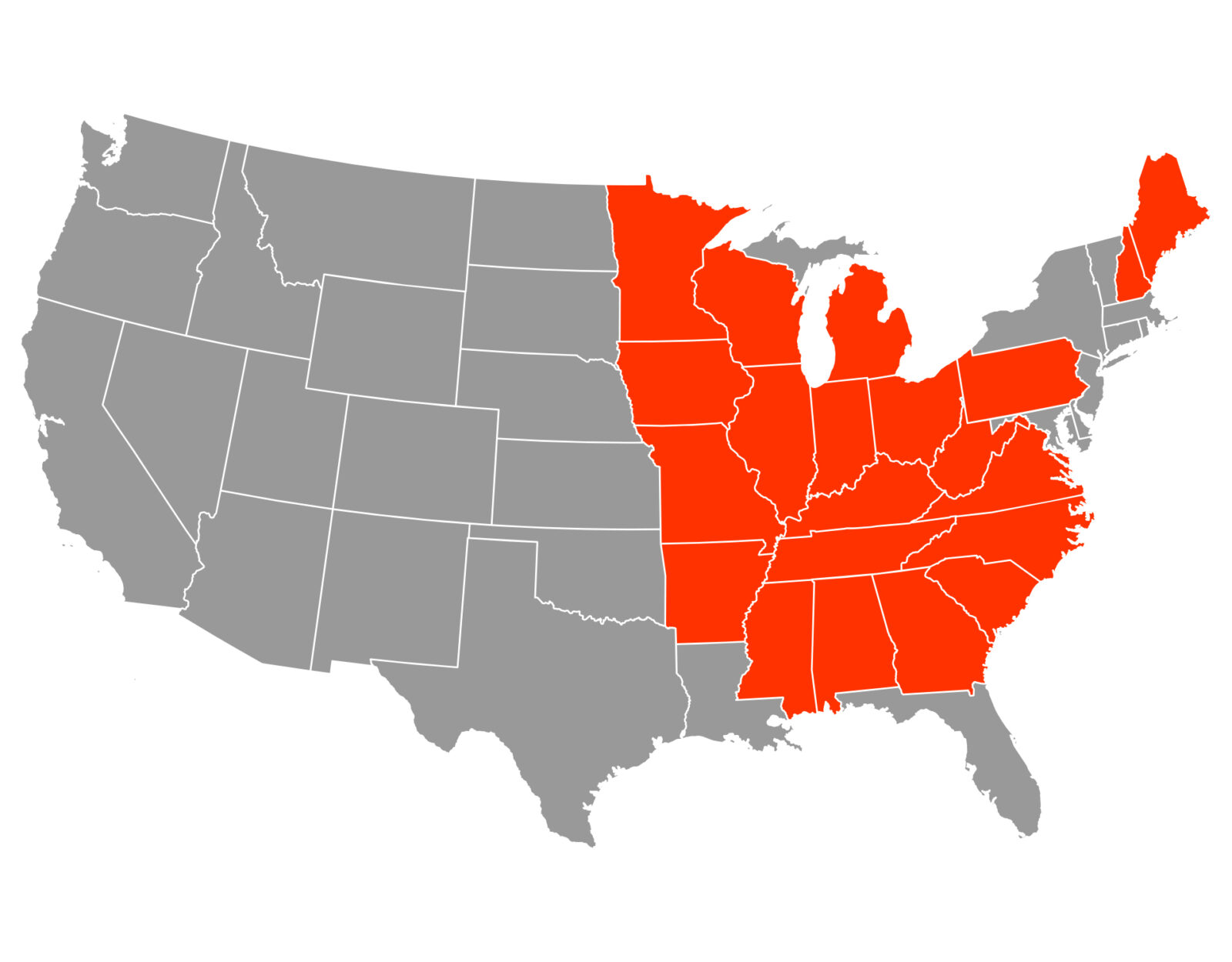
Alabama
Once a Mecca, Now in Limbo
Alabama is a state where turkey hunting might as well be its own religion and opening day is viewed as a public holiday. The residents there take it pretty seriously, to say the least. At one point, Alabama was believed to have one of the best turkey populations per capita in the entire country. These days, however, things are a little different. The population is yet to recover from a severe decline and some stricter limits have been put in place for harvests, with four gobblers only, one per day, combined over the fall and spring seasons. However, it is important to note that Alabama does still have a very huntable population. Just don’t go down there expecting to find a gobbling turkey on every ridge or in every hardwood bottom. There are still some outlier pockets within the state that the ever-abundant turkey numbers days are still upon us but the reality for most hunters in the state is that to find success, much work will have to be put in.
Local Intel: Mossy Oak’s David Hawley
“Alabama remains one of turkey hunting’s true ‘blueblood states,’ due to decades of turkey hunting culture, lore, and strong populations of wily eastern gobblers. With a season that starts in late March, Alabama is a popular destination for hunters looking to get a jump on their season and tangle with some of the most-pressured and seemingly-evil birds in the country. With terrain that spans from swamps along the state’s expansive river systems to the prairies of the famed Black Belt region in the center of the state and into the foothills of the Appalachian Mountains, doing battle with Alabama turkeys will test your skill and your shoe leather.
“While 92% of Alabama is privately held, large public land areas abound through the state, including the Talladega National Forest in northeast and central Alabama, and Barbour Wildlife Management Area (WMA) in east Alabama. Due to the popularity of the sport in Alabama, be prepared to arrive early and do plenty of walking to beat the crowd. With the season’s start being delayed to allow more time for breeding, early season could mean catching solo gobblers, or gobblers that have lost their hens on up in the morning. Allow the turkeys’ behavior to guide you on how aggressive to get with your calling. Even with statewide numbers being lower than in years’ past, Alabama remains a great turkey hunting destination.”
Take a closer look at Alabama:
AL Turkey Hunting Info
AL Hunting Regs
Arkansas
Apply for Better Hunts
Arkansas turkeys have been struggling but harvest now seem to be on a slow climb back up. 2024 harvests were a few hundred more than the previous year, just over 9,300. What state officials would like to see is harvest numbers in 10,000-12,000 range, but that will take time.
Arkansas also offers more than three million acres of public land, and if you are fortunate enough to pull a draw for one of the coveted WMAs, then you can find yourself having a quality hunt. Tip: Use HuntReminder to not miss your chance at the draw.
Even without the draw, tags for the state’s two turkey zones (formerly there were 18 zones) can get you in the game. Arkansas allows for a statewide bag limit of two turkeys, but no bearded hens or jakes allowed (unless you’re 6 to 15 years old, for the latter). Hunters are also only allowed one of their turkeys to be taken during the first seven days of the season, and the limit of two cannot be taken on the same day.
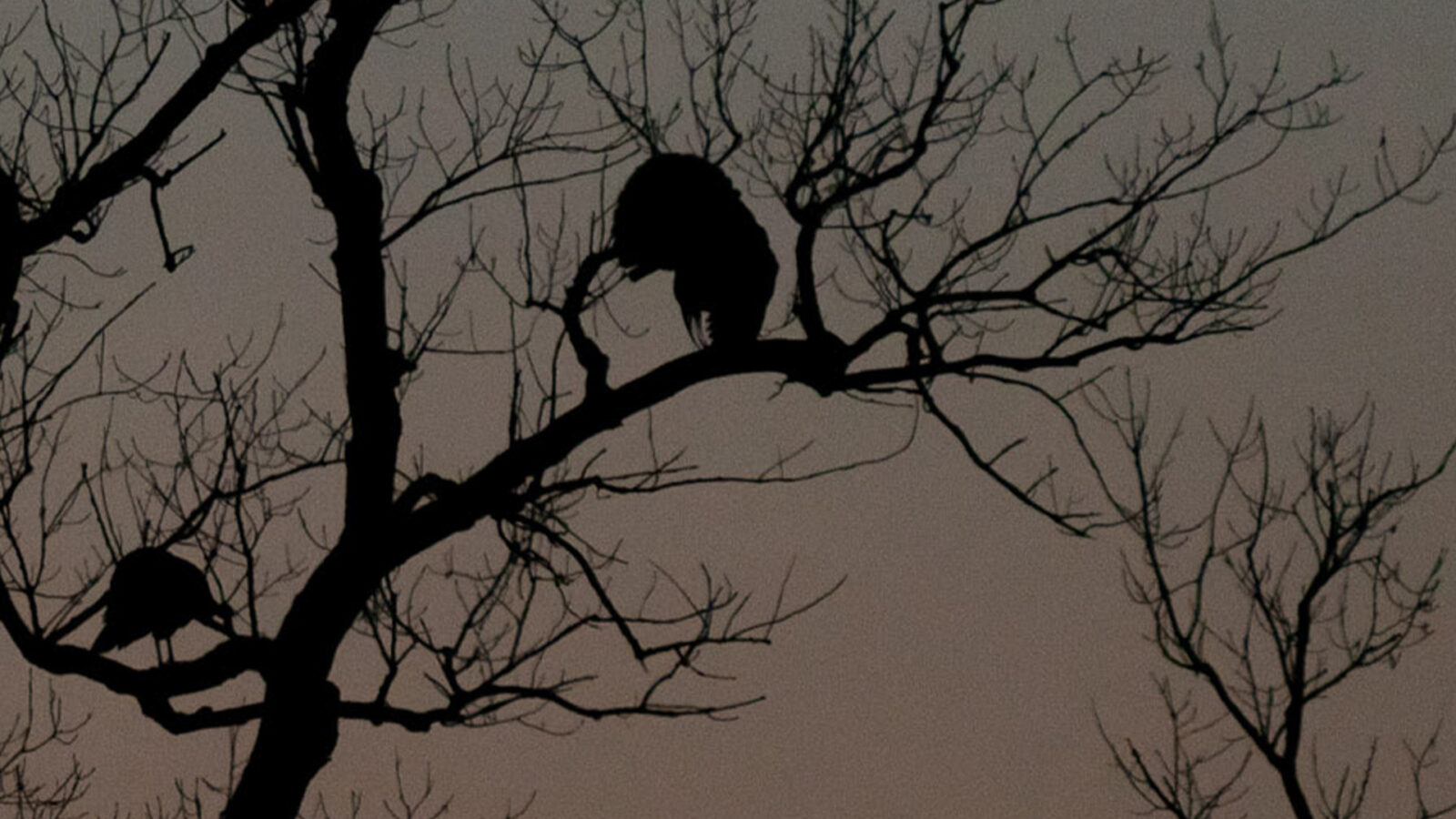
Arkansas WMA Hunts
With HuntReminder, create more spring opportunities and never miss an application deadline again.
Local Intel: Split Reed’s Cade Trickey
“Arkansas is far from what most turkey hunters consider a dream destination, and for good reason. Over the last decade, Arkansas has been the ‘poster child’ state for declining turkey populations. Everyone seems to have their opinion on why we have seen a decline, but there is certainly no clear cut answer for what we are seeing happen to the wild turkey.
“Despite declining populations, the Natural State offers some of the most beautiful scenery and habitat you can find on any spring morning. The state is split in half with the Mississippi Alluvial Plain in the eastern region and the Ouachita and Ozark Mountain ranges in the northern and western regions.
“The delta has nearly nothing to offer a turkey hunter with its fluctuating river levels that are sure to flood the bottomland timber each spring. However, both the Ouachita and Ozark Mountain ranges offer vast amounts of national forest lands that the eastern wild turkey claims home. Steep and rugged hardwood mountains with clear running streams between are what you can expect to put your boots on. It is no walk in the park to tackle an Arkansas public land gobbler; however, if you’re willing to put the time in and find one, he is capable of giving you everything you could ever want out of a spring turkey hunt.”
Take a closer look at Arkansas:
AR Turkey Info
Georgia
A Reputation of Turkey Hunting
Georgia has been home to many diehard turkey hunters, especially boasting over 3.6 million acres of public land, a million of which are designated WMAs spread over 90 different properties. You can chase turkeys here in a variety of terrain, from flatland pinewoods and swamplands to red clay farmlands or among the Appalachian Mountains.
Like many other states, Georgia is taking precautions to protect its turkey population, which has shown substantial declines (66% decrease in harvests between 2013-2023). The bag limit has been scaled back to two turkeys, and the opening date has been moved to be one to two weeks later, depending on whether you’re hunting on a WMA or not.
Local Intel: Hunt Club TV’s Phillip Culpepper
“A Georgia turkey has been rumored to be one of the ‘toughest’ turkeys to bag. Like anywhere you hunt, the higher the population the better the odds of success seem to be. In recent years, at least since I was a kid growing up learning to hunt, you don’t hear turkeys at daylight like I remember doing with my dad at an early age. However, there are still places in Georgia that are incredible turkey hunting honey holes. There are several WMA’s scattered across the state that are loaded. It may take a year or two to draw an opportunity to hunt, but it is well worth the wait. A few years ago, I drew a public land week to hunt (back when the limit was three birds) and killed all three of my birds in a 24-hour period. The first 10 days of the season and the last week of April have always been my favorite times to hunt Georgia. I’ve always had repeated success during that time, dating back to when I was in middle school trying to figure out a way to be in the woods rather than attempting to solve a math problem.
“Depending on what type of terrain you want, Georgia really has it all. South Georgia offers you your chance at a ‘field bird’ more likely than not. With huge agricultural fields covering South Georgia, there’s a pretty good chance you spot a strutter in a field to go after. Middle Georgia, where I’m from, is covered with more rolling hardwoods and ‘food plot’ scenarios. Great terrain to run-and-gun on. When the time is right and birds are responding to calls, that part of the country is an exciting spot to hunt. Finally, if you are wanting to test your lungs and endurance, head up to North Georgia and get after a ‘mountain bird.’ The thighs on these birds are that of a D1 full scholarship running back. Hunting the hill country can be frustrating and tough, but so rewarding when it comes together!
“Georgia is an over-the-counter tag state. Show up with your hunter safety card, enough money to get a nonresident license, and hit the woods.”
Local Intel: Close Proximity TV’s Jordan Barnes
“Georgia, like most any other state, has turkeys in all regions of the state. For almost three decades now I have hunted easterns here. I’ve hunted them primarily in the lower coastal plain, upper coastal plain, and piedmont regions of the state. I can tell you that they are still just turkeys. You’re liable to strike a hot one at any time of the season or day. The biggest thing about southern turkeys is their response to pressure. That pressure can vary depending on the turkey more so than what type of land his toenails happen to be dug into. I’ve found some just as pressured on private land as the most hunted WMA in the state. A lot of folks turkey hunt here. Last spring, my two Georgia gobblers comprised of one from a WMA and one from private land.
“I came very close five times hunting the WMA gobbler before I finally got an arrow in him. The second he would get to the 40-50 yard mark he would pick me out of the landscape like I was a neon sign. To the human eye, I appeared as just another green bush with nothing added to the scene around me. This was only 14 days after the season opener.
“I killed the private land gobbler in between out-of-state trips the first week of the season. If that gobbler would see a truck from the road slow down he would run. If he saw brake lights he would run and fly. Luckily, I found a three-day window where he and his hens ended up using the portion of the field not viewable from the road. One afternoon, I ended up between him and the hens and got an arrow in him. This should give you a good feel for how ‘wiggy’ these turkeys can be and how pressured they are.
“These turkeys are different. I have seen plenty of times where an influx of hunting pressure made turkeys quit gobbling for long stretches of time. They tend to start using strutting areas, visiting areas where hens can see them, and communicating with quieter spitting and drumming low-frequency sounds. Plenty of times I’ve found a hot one that did it right, but most of the time the later past the opener the calendar reads the more attention to detail required.
“Read the sign and put the pieces of the puzzle together about how a gobbler is using a specific area based on the terrain. A slight crest of a small ridge in a flatland pine block can make all the difference on how he cuts through it. He wants to be seen and heard. He wants to be able to see off each lip. They don’t have to gobble a lot, or at all for that matter, in order for you to put one over your shoulder. For me, there isn’t a feeling out there that rivals predicting how a gobbler will use an area and playing him right into your hands. I’m not talking about deer hunting him either. I’m talking about minimal calling and predicting exactly how he will cut through an area shortly after sitting on him. Sometimes, with these types of turkeys you have to think outside of the box. Maybe it’s calling 100 yards from where you’re sitting now and shutting up. Maybe it’s confidence in silence. Maybe it’s sitting to him from an area he’s not used to hearing hunters from. Maybe it’s calling to him while roosted just a little the evening before and nocking the safety off the next morning in silence.
“Be prepared to walk many miles, as Georgia has many foot travel-only signs at the gates. Be prepared to battle mosquitos of biblical proportions in the middle to southern portions of the state. Bring plenty of water because it gets hot here. Most importantly, bring a good positive attitude. I’ve hunted government ground turkeys in over 30 states and I’ll put these Georgia turkeys up against any I’ve hunted. Like anywhere, the harder and smarter you work the more often you will be rewarded.
“The poult recruitment for the past decade is very similar across the state’s regions. This is not a state where you will hear a ton of birds like in the 1990s and early 2000s. If you want to hunt flatland pines and swamps, hunt the southern half of the state. If you want to hunt more hilly terrain, hunt middle Georgia. If you want to hunt mountain terrain, hunt above Atlanta. Wherever you decide to hunt in Georgia you should hear a bird.”
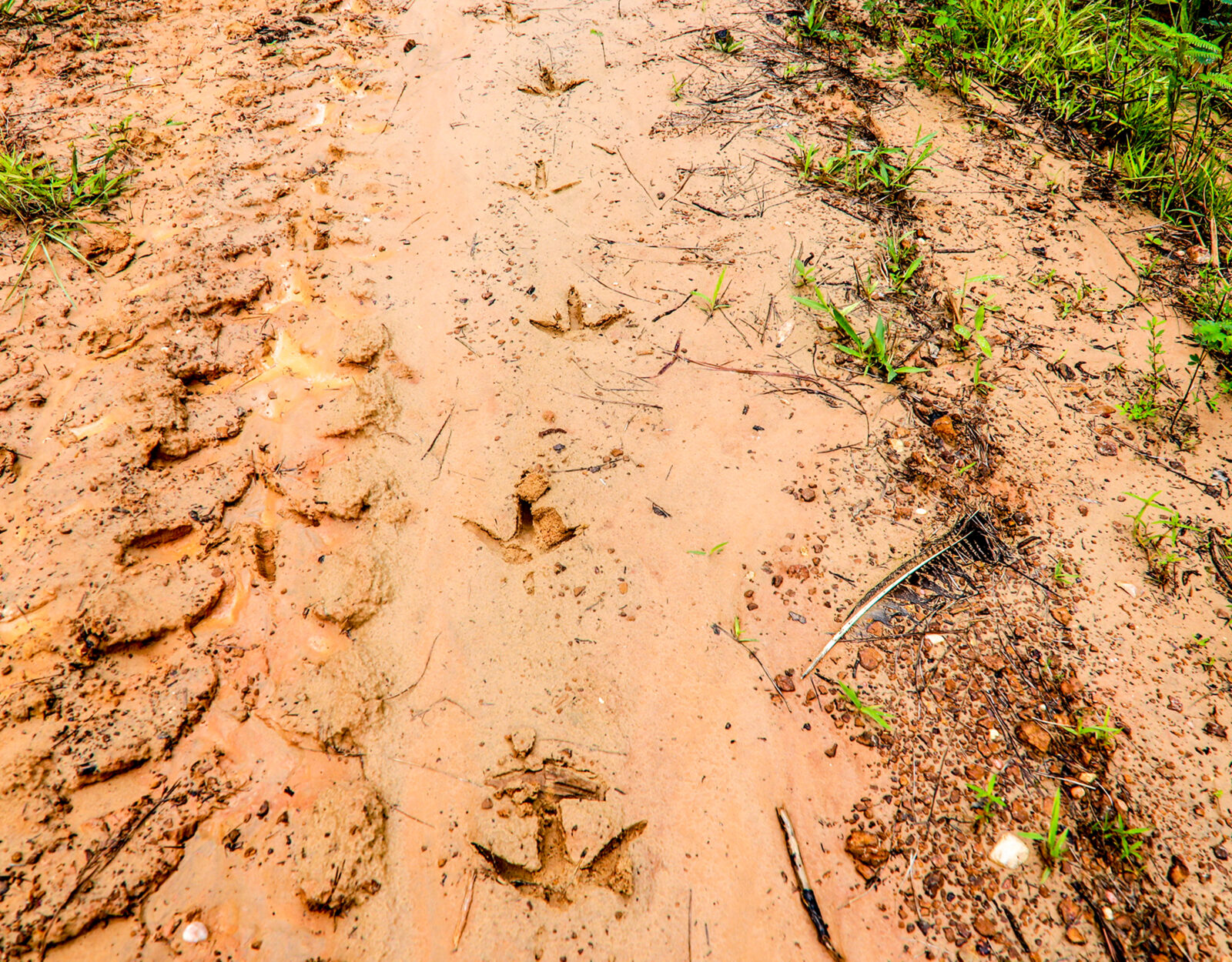
Local Intel: Realtree Outdoors’ Tyler Jordan
“Hunting turkeys has been my passion since I was a little kid. Some of my earliest hunting memories are sitting in my dad’s lap in the Georgia hardwoods with a tom gobbling yards away. From that point on I was hooked. Hunting eastern turkeys, especially in Georgia, can be some of the toughest hunting you will find. Finding land to chase birds in Georgia can be tough but with the amount of public land access and landowners willing to either lease turkey rights or trade out hunts for hunts in other states, it can be done. If you can find public land that is ‘bow only’ the success rate seems to go up.
“Like many states, we are seeing a decline in the numbers in Georgia. The eastern side of the state seems to be hit harder than the western side, but the number of birds statewide has declined. The state is taking steps this year to help, including reducing the number of birds you can harvest to two and backing the season up a week to give the hens a chance to get bred. Hopefully, we will see a turnaround in the population soon. Other challenges that you may face hunting turkeys in Georgia are the heat and mosquitos. Having lightweight clothing and bug spray is a must. There is just something about fooling a Georgia eastern that gets my blood pumping, and I can’t wait to get after them soon!”
Take a closer look at Georgia:
GA Regulations
GA Turkey Info
Illinois
Win That Lottery
If you’re feeling lucky you should turkey hunt in Illinois, or at least try to. Illinois has a series of lottery draws for resident and non-resident hunters. Residents can apply for all three lotteries; while non-residents can only apply for Lottery 2 and Lottery 3, which both have later application dates. If, by chance, there are still leftover tags after Lottery 3, county-specific permits may be available over-the-counter.
If you do win a permit, Illinois’ turkey populations are faring relatively well. In 2024, Illinois hunters harvested a record 17,208 wild turkeys, including a record 2,009 youth turkeys. The top five counties for the harvest were Jo Daviess, Jefferson, Marion, Pope, and Randolph.
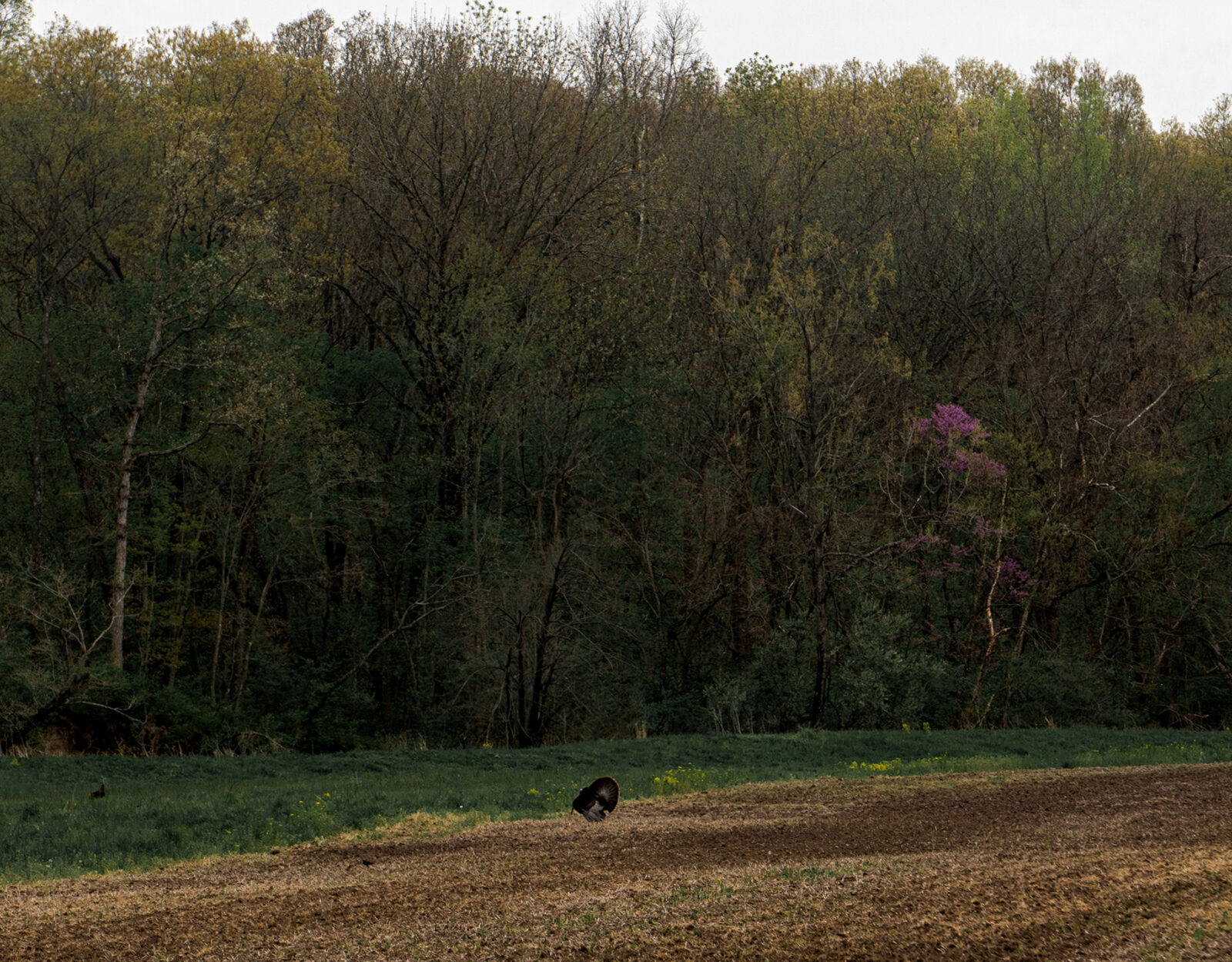
Local Intel: The Hunting Public’s Aaron Warbritton
“Illinois has a draw system for spring turkey hunting. A hunter can apply for various seasons, and in the draw you must pick between certain counties. Eastern turkeys can be found all over the state, from flat farm ground up north to rolling timbered hills down south. Both private and public land opportunities exist for those willing to do some homework.
“I hunted in Illinois last year during their first season in early April. We hunted public land and found turkeys to hunt but the weather made it more challenging than expected. It was cold and rainy for the majority of the season I drew. This can throw a wrench in things for traveling hunters – especially early in the season when these cold weather fronts can shut birds down for several days in a row. We had a great time and ended up harvesting a bird on the fourth day of the hunt, but I felt the season dates were a bit early for peak gobbling action in that part of the country. Hunting pressure was also high during the first season.”
Take a closer look at Illinois:
IL Turkey Info
IL Turkey Regs
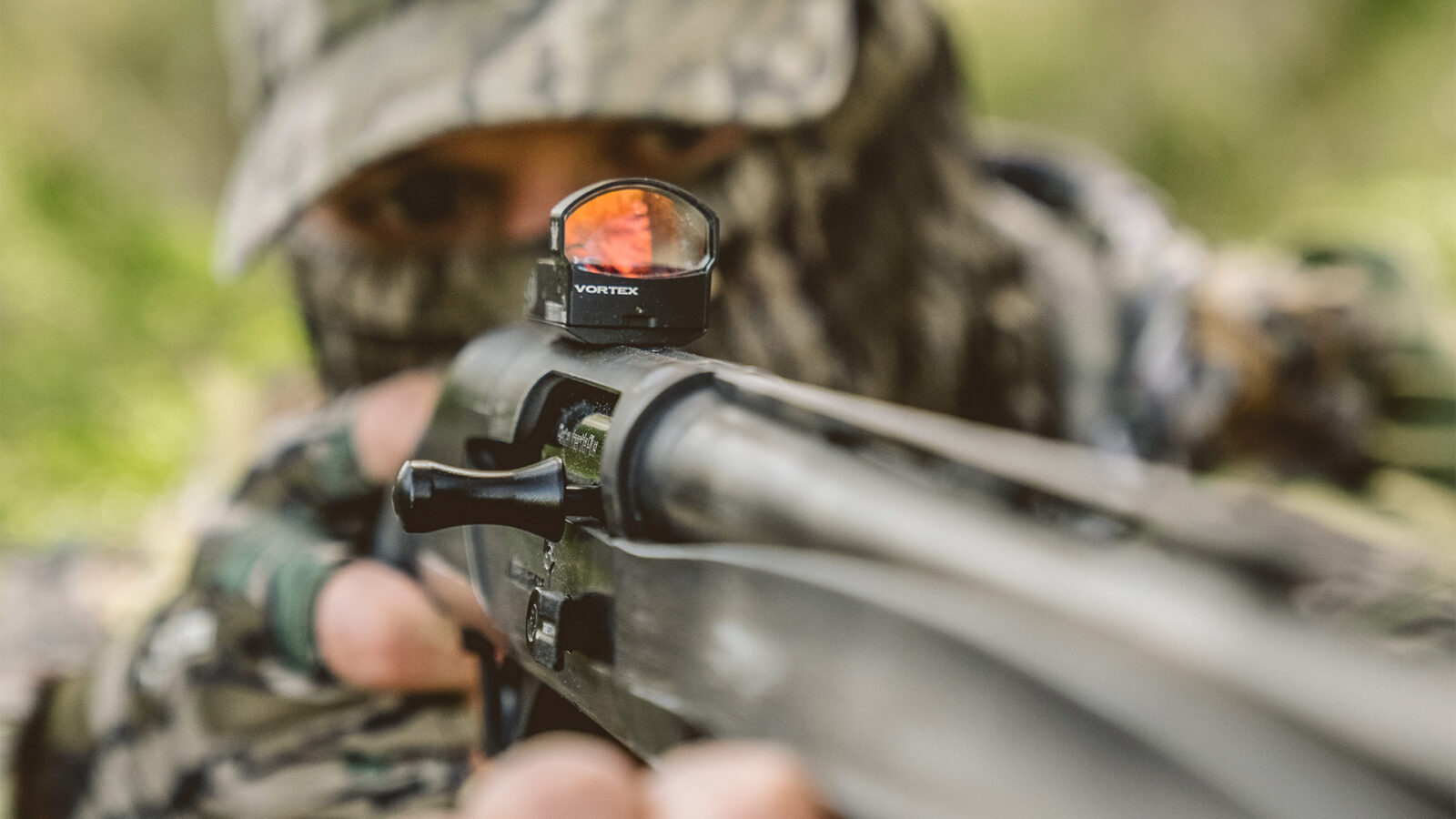

20% Off Vortex Red Dots
Save 20% as an onX Elite Member on Vortex Venom or Crossfire red dots for your spring turkey set-up.
Iowa
Scout for Deer While Chasing Gobblers
Iowa boasts some truly outstanding critter habitat throughout much of the state. With the Mississippi River on its east boundary and Missouri River on its west, it has a shocking number of rivers and major creek systems that combine with vast agriculture to make it so critter dense.
The population is faring well, too. In 2024, Iowa’s spring turkey season had a record harvest of 16,059 birds. This was an increase from the 2023 record of 14,843. Wild turkeys were also reported in all 99 counties.
Iowa is another state that has a drawing system for spring turkey hunts, the application period runs throughout January. With season structures that increase in duration as spring goes on, you have to choose your season dates and region of the state versus a season-long, statewide opportunity.
The biggest kicker for hunting Iowa is the ~$275 price tag that comes with that single bird for non-residents. As a non-resident, if you are collecting deer points to cash in on, this makes Iowa an awesome opportunity to kill two birds with one stone, so to speak. You’re going to have to buy the $144 hunting and habitat combo for your deer tag the year you will draw anyway, so in essence a spring turkey tag will just cost you $119 and you’ll be able to gain valuable intel with boots-on-the-ground scouting for your upcoming whitetail hunt.
Local Intel: The Hunting Public’s Ted Zangerle
“I’ve lived in Iowa my whole life and over the past few years I have been able to travel to most areas of the state to hunt turkeys. Eastern turkeys can be found in abundance all over the state. In the northeast portion of the state you will find some steep, rugged hills and as you go south it turns into flatter farmland with river/creek bottoms mixed in throughout. All areas of the state are littered with turkeys in my experience. There are lots of good options for hunting public land, and “by permission” ground seems to be somewhat easy to get as well. Iowa turkey seasons are split up into four different seasons: 1st, 2nd, 3rd, and 4th. Each one of those will vary in length so you will want to check what the dates are on those each year.”
Take a closer look at Iowa:
Iowa Seasons
Iowa Regs
Kentucky
The Short-but-Sweet Season
Kentucky is deserving of a highlight because it has a lot of little things going for it that add up to an excellent turkey hunting state. It’s centrally located, so you can easily tack on a few days to hunt here from almost anywhere. The population is stable, and 2024 spring turkey harvests numbered 33,460 birds, the third-highest in the state’s history. This was also 9% higher than the state’s five-year average.
The turkey season is short and sweet, about three weeks long, and about 95% of the land in Kentucky is privately owned. This doesn’t mean there’s no public land in Kentucky. In fact, the public land is terrific for holding turkeys. Routinely, over a half-dozen WMAs in the state net over 40 harvests in a season.
What really sets Kentucky apart from other places is how diverse the terrain is, so you might be calling after mountain birds hidden in the Cumberlands or crossing your fingers a gobbler strutting on agricultural plots moseys your way.
Local Intel: Land and Legacy’s Matt Dye
“The hardwood ridges of Kentucky are prime locations for gobblers to roost and project their gobbles over a long distance. However, this can make for some challenging setups when setting up on a bird off the roost. Topography can be limiting depending on your access, but try to get set up on the same elevation or ridge line as the bird. But beware, if that doesn’t work out right off the roost, the benches and saddles are other great places to call gobblers into later in the morning. They use these topography features commonly to navigate through the various hills and hollers of the Bluegrass State. Therefore, setting up here increases the likelihood of getting a bird within range.
“If a gobbler hangs up, use the hardwood timber to your advantage. Put your calls down and scratch in the leaves to sound like a hen feeding, this realistic sound has brought many lonely gobblers into range. It’s common to have gobblers ‘periscope’ or barely look over a hardwood ridge in Kentucky when coming to a call, so be ready, that may be the only look they give you.”
Take a closer look at Kentucky:
KY Regs
Maine
Late Seasons and Ample Ground
Maine may not be top-of-mind for a lot of turkey hunters, but that might change once you realize why it stands out. The Pine Tree State is one of the last in the US to close out its spring turkey season, ending in early June. Secondly, only about 18,000 licenses are sold annually in a state with 1.9 million acres of public land. That’s a recipe for long hunts in solitude in these spring woods. One word of caution, however, is the state’s recent “Do Not Eat” warning that pertains to deer and wild turkeys in some counties.
Local Intel: The Hunting Public’s Jake Huebschman
“In the spring of 2021, a large group of us went to Maine to end our spring, as it is one of the two states that allows hunting into the month of June (Michigan being the other). With a lot of the state being timber, we targeted an area that had a mix of agriculture and permanent water sources. Maine is also unique in the fact that you can hunt ‘unposted’ ground. That proved to be important with the warm weather we were faced with being there in early June that reached up into the 80s.
“Gobbling activity for the most part was early in the mornings and late in the day when temps were a little cooler, aside from the occasional hot bird we would find. So having the crop fields to cruise around and locate birds was a huge help and put us in areas we knew had turkeys. Before going onto the unposted ground it is important to try and contact the landowner ahead of time just to avoid any controversy. In our experience as long as you are respectful and honest most people were more than happy to let you hunt and I believe all of us ended up filling our tags on unposted ground.”
Local Intel: onX’s Own Lake Pickle
“The state of Maine has everything I want in a turkey destination. There are different habitat types to hunt: big timber, open fields, creek bottoms, and rolling topography. It also has some of the most hard-gobbling turkeys I’ve ever encountered. There is a large amount of public ground and hunting-accessible areas, so there is plenty of room to roam, but in recent years hunters have taken a keen interest in how late the season stays open. This makes hunting the state a little more of a challenge than in years past but it is still definitely worth the trip.”
Take a closer look at Maine:
ME Hunting Info
Michigan
Many To Chase
If you’re at all familiar with the hunting landscape you know Michigan has a plethora of deer hunters, many of whom also love to get out to chase spring turkeys. With that being the case, expect public areas to see pressure and consider thinking outside of the box to find birds that haven’t been messed with. Water access, steep or long walks into public, or knocking on doors can all be viable options to find less pressured birds.
The state estimates there to be over 200,000 wild turkeys and the population has remained relatively stable over the last decade. This makes Michigan a pretty reliable destination for a spring turkey hunt.
Local Intel: Chris Bee
“Growing up as a true Michigan boy, I’ve chased turkeys all over the great state of Michigan. From Lake Michigan to nearby Mackinaw Bridge and back down to southern Michigan I’ve had my fair share of a mixed pursuit of Michigan’s Eastern. For the majority of the state, there is a healthy and thriving turkey population usually offering multiple opportunities for success. Michigan is a single tag per spring state which helps offset the crazy amount of hunters across the mitten. In my experience, birds are plentiful and easier to hunt at the start of the season but can quickly harden as neighbors and pressure can quickly educate birds. Many times, I have found success as the season grew on calling less, few or no decoys and being aware of added pressure in the turkey woods. The lower half of the state has great potential for more “Ag Land” birds, use fields and smaller chunks of woods to your advantage to scout fields for strut zones or where turkeys will gravitate to for food. Sometimes it is worth burning a day of hunting to find birds and plan the attack rather than poking around in the dark pressuring them even more. As you go north and west, hunting big woods or pine flats become more common and I have still found great populations of birds. There is a good amount of public land to pursue turkeys depending on the zone and the proper tags across the entire state. Turkey numbers are lower in the Upper Peninsula, but can still be a fun/challenging big woods hunt. Michigan also has one of the longest open spring seasons spanning into the beginning of June, which makes it a great option if you are looking to extend your season from your home state.”
Take a closer look at Michigan:
MI Hunting Info
Minnesota
Might March Through Marshes and Mountains
Minnesota is a great state to chase gobbling turkeys in. With a one-bird limit there are plenty of gobblers on the landscape and you can buy a tag over the counter, making Minnesota a great state if you failed to plan much in advance. Varied terrain and ample amounts of public ground allow you to hunt as desired, whether that is sweating your way to the tops of bluffs along the Mississippi River or hunting the vast timber further north. There are longbeards to be found. In fact, there are an estimated 70,000 wild turkeys here and the 2024 harvest broke all previous records.
Local Intel: Shane Simpson Hunting’s Shane Simpson
“Minnesota has a thriving turkey population with established populations throughout most of the state. Areas with much lower turkey densities, and probably areas that you should avoid as a traveling turkey hunter, are the northern third and the southwestern portions of the state.
The northern third provides very little in the way of winter food sources, making it very difficult for turkeys to survive the winter in this region. The southwest part of the state is the complete opposite, in that there are plenty of food sources but little in the way of suitable roost trees and cover, which limits the turkey population in this region to widely distributed pockets of small flocks. Roosting (locating gobblers in the late evening) is a great tactic for locating Minnesota gobblers at last light.
Unlike the heavily pressured turkeys of the southern states, which rarely gobble in the evening, Minnesota gobblers readily gobble to owl and coyote calls before they tucked their head under their wing for the night. The habitat varies greatly among the turkey rich areas of Minnesota, so having multiple types of footwear on hand is advisable.
Depending on where in the state you pursue Minnesota gobblers, you can expect to encounter anything from isolated oak islands surrounded by cattail marshes to steep and treacherous, mountainous terrain, along with everything in between. Minnesota’s spring weather is very unpredictable throughout the first half of the season with snow, rain and wind likely on any given day, but the weather patterns stabilize in mid to late May, with most days welcoming hunters with warm, calm and sunny days, so plan your visit accordingly.”
Take a closer look at Minnesota:
ME Hunting Info
Mississippi
More Hunters Than Turkeys
Mississippi is a state one could argue produces more diehard turkey hunters than any other in the country. It’s also a state that is nearly 90% private lands. Despite having a rich turkey hunting history, adequate habitat, and a huntable population, the preceding factors make turkey hunting in this state a formidable challenge for even the most seasoned hunter.
There are accessible public lands, but they get hunted hard and hunted often. One of the most enticing factors about hunting Mississippi for both residents and out-of-staters is that the general season opens March 15 (one of the earliest seasons in the country). This is a double-edged sword. It gives hunters more opportunity, but it also results in turkeys that have seen and heard every trick in the book. Finding success in the turkey woods in this state will require ample scouting, learning how to deal with heavily pressured birds, and in some cases, the ability to be too stubborn to give up.
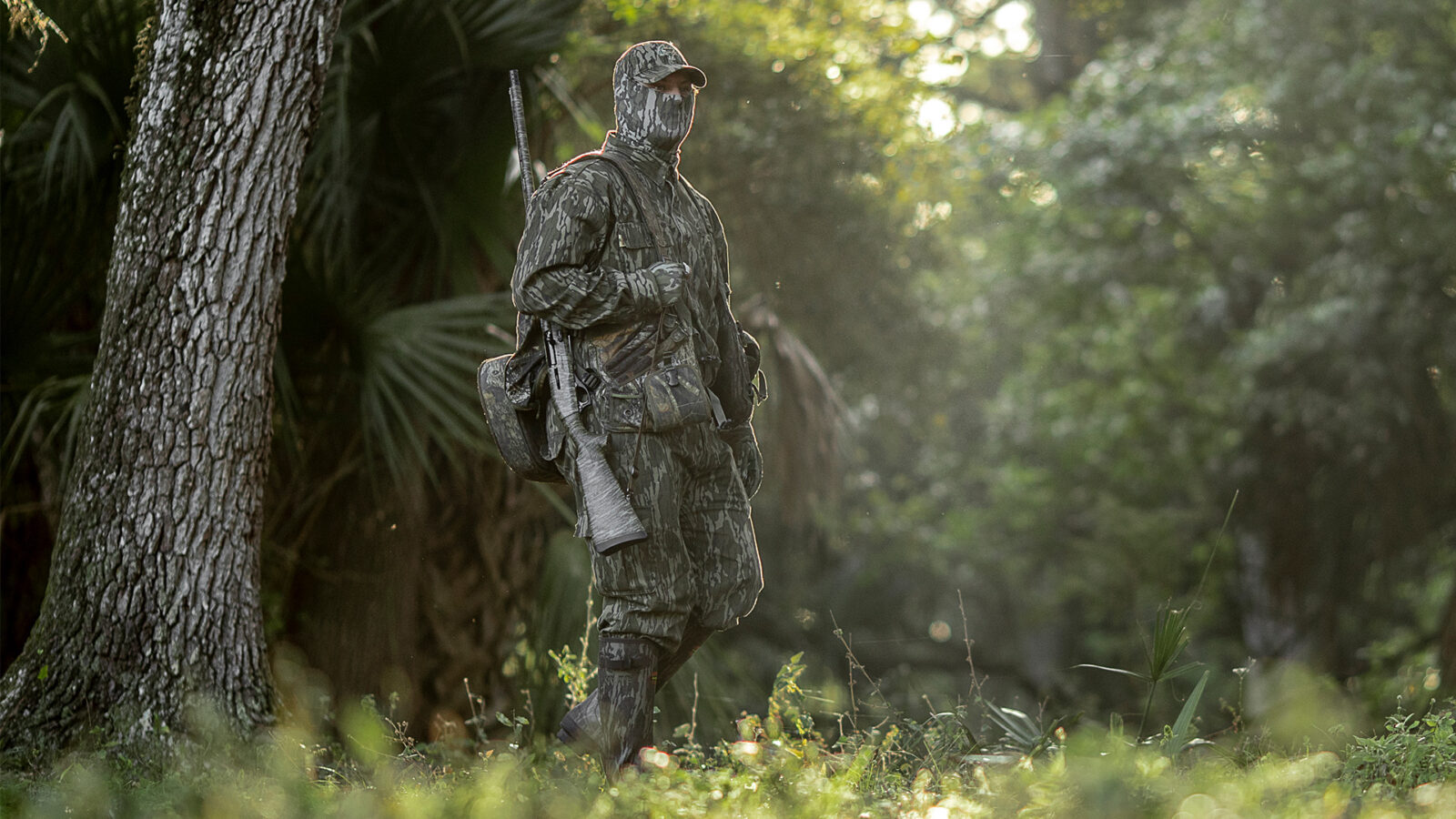

Turkey Academy From Mossy Oak
An A-to-Z course for hunting turkeys. Whether your first season or fortieth, Turkey Academy will provide you tips, tactics, and insights to make you a better turkey hunter.
Local Intel: Mossy Oak’s Ronnie ‘Cuz’ Strickland
“In Mississippi, the regular season begins in mid-March with the youth the week before, so it usually looks like late deer season in the woods when it opens up. With that said, the southern part of Mississippi may be way ahead as far as foliage and temps. You just never know. It’s not uncommon to start hearing gobbling reports in late January and certainly all through February, but in my experience, they are still pretty henned up when the season opens, no matter the temp.
“If I was going to pay the Magnolia state a visit to turkey hunt I would choose late March or early April. That seems to be the best time as far as catching gobblers that are a bit more responsive. Don’t get me wrong, I won’t miss a single day, early season or not, but those first couple of weeks I’m used to getting my feelings hurt by longbeards that sound off but have no intention of coming in.
“A few tips on hunting down south, especially way down south, is to pack a thermacell and refills, the bugs can and will be terrible at some point. Rubber boots are standard issue here and an absolute necessity. If you’re scared of ol’ ‘no shoulders,’ snake boots are very popular too. Mississippi has all the varieties of venomous snakes and I’m personally scared of all of them. They don’t keep me out of the woods but I’m looking down a lot. Not trying to scare folks away, just saying they can be pretty active when the weather starts to warm up.
“There are plenty of WMAs and other public options in Mississippi that have turkeys, but like any state right now you will have competition. The best place to start your scouting is always online. The MDWFP has a great website with regulations, maps, and great information. You won’t need special calls with a southern drawl, just normal yelpers work fine. Good luck wherever you’re headed this spring.”
Take a closer look at Mississippi:
MS Turkey Regs
Missouri
The Turkey Transplant State
Missouri’s turkey hunting history is one that would bring a smile to any conservationist’s face. Their first ‘modern’ turkey season took place in 1960. It consisted of a 3-day season, 14 counties, 698 hunters, and 94 harvested birds. In present day, every county in the state is involved in the annual spring turkey season. According to records kept by the Missouri Department of Conservation, more than 5,000 eastern wild turkeys that were trapped in Missouri have been translocated to other states and provinces.
Missouri is a great place to hunt spring turkeys. In 2024, 43,380 turkeys were harvested during the spring season, which was the third year in a row of increasing numbers. The top harvest counties were Franklin, Callaway, and Texas.
Local Intel: Heartland Bowhunter’s Shawn Luchtel
“Being a Missouri resident my entire life, I have been able to experience quite a bit of Missouri spring turkeys. However, the majority of my hunting has taken place in central and northern Missouri. I have yet to experience the large tracts of timber in southern Missouri while hunting spring gobblers, but I have heard many stories of success. Central and northern Missouri have always seemed to have great habitats for turkeys, with the combination of hardwoods, native prairie, and crop lands offering diverse habitat for breeding and nesting grounds. It’s been a blessing to hunt easterns across this terrain each spring.”
Local Intel: Land and Legacy’s Adam Keith
“Spring turkey season in Missouri has a rich history of being one of the top performing states in the country. Unfortunately, due to many variables like wet springs, low hatches, loss of habitat, and predation, the population has been in decline across the state, but that doesn’t mean you can’t find gobbling turkeys!
“Being a sixth-generation Missourian, I’ve chased turkeys throughout the state and each region offers different elements and challenges. If you enjoy the pursuit of turkeys in a more open landscape with crop fields and rolling hills look north of the Missouri River. If you’re like me and you love the view of a hardwood ridge with a thundering gobbler underneath the beauty of flowering dogwood trees, bring your pursuit to the Ozark Mountains. With a landscape dominated by timber through much of the southern portion of the state, it will require scouting with your ears rather than glassing for strutters in the afternoon. Whether you’re looking to go into the northern or the southern part of the state, there’s plenty of public land and a good population of turkeys.”
Take a closer look at Missouri:
MO Regs
New Hampshire
A Passing-Through Hunt
New Hampshire isn’t new to turkey hunting. In fact, turkeys were hunted so hard there that in 1854 it was reported that only a single turkey was alive in the state, and then there were none. Today, the Granite State boasts between 40,000-50,000 birds, and though it’s a small state it’s close to other great turkey states like Maine and Pennsylvania. New Hampshire also has a unique tradition for land access that can benefit hunters.
According to the New Hampshire Fish and Game Department, “Based on long-standing tradition, nearly all lands in the state of New Hampshire are open to hunting. All state, federal, municipal, county, and private land is open to hunting unless it is posted against hunting. However, hunting is a privilege granted by the landowner—not a right granted to the hunter.”
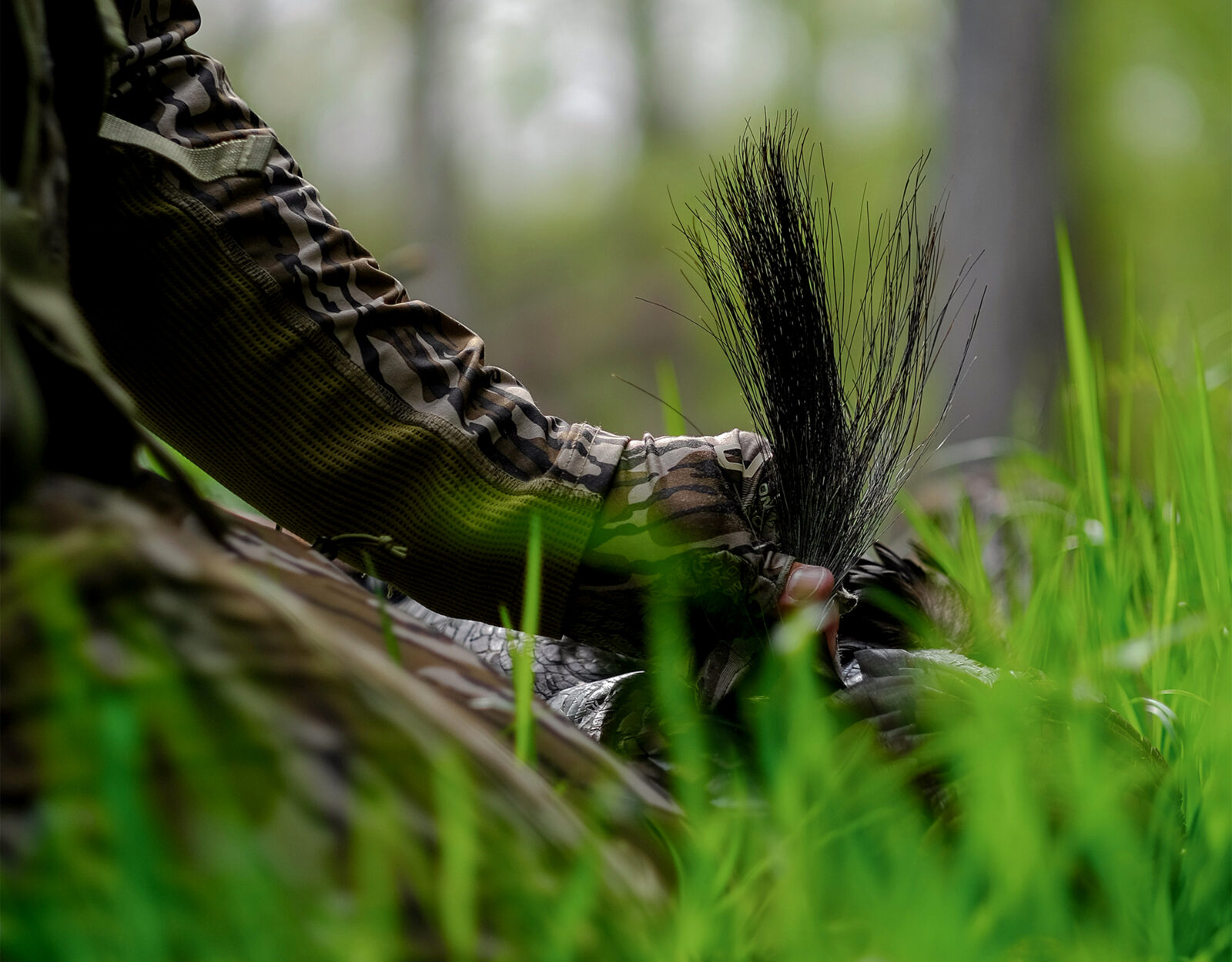
Local Intel: Close Proximity TV’s Jordan Barnes
“New Hampshire, like any New England state, has turkeys and a good bit of hunting pressure. It is a cool place to hunt them though. The noon cutoff is normal here and takes some getting used to. It has cost me several opportunities at birds just two or three minutes past the cutoff. Rock walls line the outsides of a lot of habitat there. It is very diversified and made up with thickets, hardwood timber, pastures, and rock-lined farm fields. This makes for great turkey habitat. Plus, I’ve found those rock walls beneficial for sneaking in on gobblers. This is what I took advantage of in Massachusetts, which is basically the same make up.
“The biggest things I reflect back on today about New Hampshire is probably the importance of using Offline Maps as well as the Line Tool within onX to map your route. ‘No Service’ can be a normal appearance at the top right of your phone there. As a Plan B to the public land option, driving around many miles in loops and door knocking can be a beneficial way to locate pockets of turkeys. Yes, even if it’s not posted you still should stop and ask permission.
“New Hampshire also has a decent amount of public land, but not as much as you will be used to coming from a bigger state. A lot of New Hampshire looks mostly the same from what I saw spending some time there. Whichever area you decide to hunt, make sure you slow it down and grab a piece of the culture while you’re there.”
Take a closer look at New Hampshire:
New Hampshire Turkey Regulations
North Carolina
Diverse Turkey Habitats
North Carolina has a range of suitable turkey habitat, from the Appalachian mountains to the swamps, farmlands, and coastal lowlands. It is true that in the 2020 and 2021 hunting seasons, a record number of turkeys were harvested: 23,431 and 21,974 birds, respectively. And then 2023 came along and hunters harvested a record number of birds, over 24,000. 2024 kept pace with the previous year with only 15 fewer birds harvested last year than in 2023. Things are shaping up for this coming season.
Whether this rate of harvest is sustainable or not is yet to be determined, but there are ample publicly accessible game lands in the state for hunters. About two million acres in whole are open to public hunting.
Local Intel: The Hunting Public’s Hayden Krimmer
“Zach and I first hunted the mountains of North Carolina in the spring of 2022. Their season begins in the beginning of April and runs through the first week of May. To hunt turkeys, you will need a general hunting license as well as a big game hunting license. Residents can purchase both licenses for a total of $39, while non-residents can get annual licenses for $200, or 10-day permits for $160. License holders are permitted to harvest two male or bearded turkeys throughout the season, with a daily limit of one turkey.
“The habitat largely consists of steep terrain with numerous creeks running through the bottoms, thick mountain laurel/rhododendron, and a mix of hardwoods with pine. A majority of the forests are very dense, making shot opportunities limited, but also providing ample cover to move in close to birds undetected. Our strategy going into the hunt was to identify multiple high points, both from the road and along access paths, to locate birds in the morning. Our first two days consisted of wet and cold conditions, making birds quiet and hard to find. As the weather improved, so did our luck locating turkeys throughout the day.
“We found that birds would typically roost in the same general area from day to day, but would cover more ground throughout the day than we typically see with eastern turkeys. We found the most success by locating these roost positions and moving in as tight as we could the following days. Another key was always trying to maintain the high ground compared to the turkeys. Both when setting up on a roosted turkey, or closing the distance with one on the ground, being above the gobblers is especially important in steep terrain. Overall, with good weather comes great turkey hunting and lots of fun in the mountains of North Carolina. Good luck!”
Local Intel: Hunt Club TV’s Phillip Culpepper
“I have only hunted a small portion of North Carolina, not too far from the shoreline, and it was incredible. The turkey density is way higher than I ever imagined. The layout of the land really reminded me of hunting back home in South Georgia. Lots of agricultural fields and swamp bottoms. A lot of the fields we hunted were wheat fields, so earlier in the season was better due to the wheat getting too tall. Whether you like to use a decoy or not, having the ability to spot them from a distance in the fields really helped us get a game plan together and get ourselves into position. Typically, the birds would push back toward the swamps to roost. Being in swampy areas definitely makes it frustrating at times, with birds hanging up on the other side of water, but also very predictable where to start the mornings so that we were always in the game. Make sure to bring your rubber boots and a good set of binos!”
Take a closer look at North Carolina:
NC Turkey Regs
Ohio
One and Done
Good news is that Ohio’s turkey population seems to be on the rise, but harvest numbers are relatively the same at about 15,500 birds taken each spring. But the bag limit is one bearded turkey in the spring, so once you’ve filled your tag you’re done.
Local Intel: The Hunting Public’s Aaron Warbritton
“Ohio has recently gone to a 1-bird bag limit to stem the tide of low poult production for several consecutive years. We know some die hard habitat managers in Ohio who do a great job on the properties they have access to. They’ve done a ton of timber stand improvement and prescribed fire to improve turkey habitat and it’s working on a small scale. Poult production has improved slightly over the last two years but another good hatch is needed. Sporadic turkey production over the last 7-8 years makes Ohio a very “hit or miss” state.
Each year we turkey hunt in Ohio and also engage in habitat improvement projects at the same time. During the first part of turkey season (usually around April 20 – May 1) hunters must stop hunting at noon. This gives us an opportunity to hunt in the morning and work on habitat in the afternoon if conditions are right. It is some of the most fun we have each spring.
The state is diverse with flat farm land up North to rolling timbered hills in the South. There are pockets of turkeys throughout that can be found with persistence. Turkey hunting pressure is heavy during the first half of the season with it tailing off toward the end. Some vast areas of public land offer a ton of opportunity with less than ideal turkey habitat. This makes the birds and coincidentally the hunters very pocketed. Some actively managed private and public lands exist that have better populations. Hunting permission can sometimes be attained if one is willing to help the landowner with habitat projects on their property. The non-resident permits are around $220 for the hunting license and the single spring turkey permit putting Ohio on the expensive side to hunt vs. other states nearby.”
Take a closer look at Ohio:
OH Hunting Regs
Pennsylvania
Turkey Passion Akin to the South
To say Pennsylvania has a long history of turkey hunting would be a vast understatement. Their relationship with the wild turkey dates all the way back to pre-colonial times when turkey populations covered most all parts of the state, with the exception of the Allegheny Plateau region in the north-central part of the state. These days, the state maintains a healthy and huntable population with an ample amount of public hunting availability, but it also maintains an ample amount of hunters, both resident and non.
Local Intel: Close Proximity TV’s Jordan Barnes
“It didn’t take long when entering the state of Pennsylvania to realize that turkey hunting is a rich tradition there. I jumped around the state last season in search of a willing gobbler, from the northern part of the state to the southern portion. Where I started, the habitat consisted of a mixture of two main types. Down low in the valleys are giant crop fields and dairy farm operations. Yes, everyone deer hunts and leases those places for the most part and, unsurprisingly, they turkey hunt them too. From the valleys, the elevation gradually rises and eventually makes what a southern flatlander like myself would describe as ‘mountains.’ Other parts of the state are more of a mixture of hilly pastures and hardwood-type habitat that don’t involve large elevation gains.
“My experiences showed that a lot of folks hunt this state. I covered over a dozen public land pieces and some national forest lands. I’m going to give it to you straight, I had a hard time finding a gobbler to hunt. Weekday, weekend, morning, or afternoon, it didn’t matter. I ran into a healthy amount of hunters either hunting or scouting. With that said, I located a large swath of public land, hit the tracker feature on the Hunt App, and set sail. I ended up finding a gobbler deep into this vast public chunk where few had likely ventured. It was several miles to get to the backside of a big bench. While I botched a perfectly executed game plan that morning, it still felt good to be in the game. Later that day I went back to a WMA where I had previously found an old gobbler track a few days prior. I ended up roosting him that evening and despite another hunter walking in on me I was somehow able to get an arrow in that gobbler the next morning.
“Pack a jacket or two because the weather can be cold there in the spring. Offline Maps were a big help as many places I hunted did not have cell service.
“The one thing that concerns me about Pennsylvania is that I didn’t see many Jakes. This puzzled me somewhat because the eastern United States saw record poult-per-hen counts in 2021. Friends of mine that hunted other areas of Pennsylvania saw a different trend, so that’s encouraging.
“I will say that the Pennsylvania Game Commission does an incredible job managing their WMAs. The landscape is full of beautiful views and if you’re willing to work in the boot leather you will probably find a turkey or two.”
Take a closer look at Pennsylvania:
PA Turkey Regs
South Carolina
Might Consider a Hunting Club
While the hunting clubs of South Carolina have long, established histories, there are public lands available for every hunter in the form of WMAs and U.S. Forest Service lands. In total, the state’s network of WMAs offers 630,000 acres of access, plus another million acres of public access from the U.S. Forest Service. Add in DNR lands and timber company properties and hunters have another quarter-million acres.
South Carolina’s turkey seasons are divided, with the Piedmont and mountain areas open in April to May, and the coastal plain season running from March into April.
Local Intel: Mossy Oak’s Jason Hart
“Having hunted all 49 states where the wild turkey calls home in America, my home state of South Carolina holds a special place in my heart and it is also where I have hunted more than the other 48 states. With strong turkey hunting traditions and a state full of serious turkey hunters, chasing turkeys in the Palmetto State can be very challenging.
“South Carolina’s terrain is very diverse, with the state falling into three main categories: the low-country, the midland or sandhills, and the upstate. From the low-country’s thick swamps, to the midlands’ sandy hills filled with pines, to the upstate’s Blue Ridge Mountain range, a turkey hunter can experience very diverse habitat changes in a few hours’ drive.
“For an out-of-state hunter, the South Carolina Department of Natural Resources offers numerous public land opportunities, from the coast to the mountains. Some of these only require a WMA Permit, while others require a lottery draw. For hunters preferring private land, there are outfitters who offer daily hunts in addition to hunting memberships on private land. Much of the state features hunting clubs, which are leased lands shared by numerous individuals. These are not new to South Carolina, as many hunting clubs have 50-plus-year histories. Due to the hunting club history in the state, knocking on doors to gain permission will likely be an uphill battle.
As far as gear and clothing are concerned, the differences in terrain and seasonal weather from the low-country to the upstate may vary greatly. A hunter in the low-country may encounter a day of walking in a snake and mosquito swamp in sweltering heat; whereas an upstate hunter may encounter a day of hiking hills and mountains in potentially sub-freezing temperatures. Dress accordingly based on the time of the season and the terrain you will encounter.”
Take a closer look at South Carolina:
SC Turkey Regulations
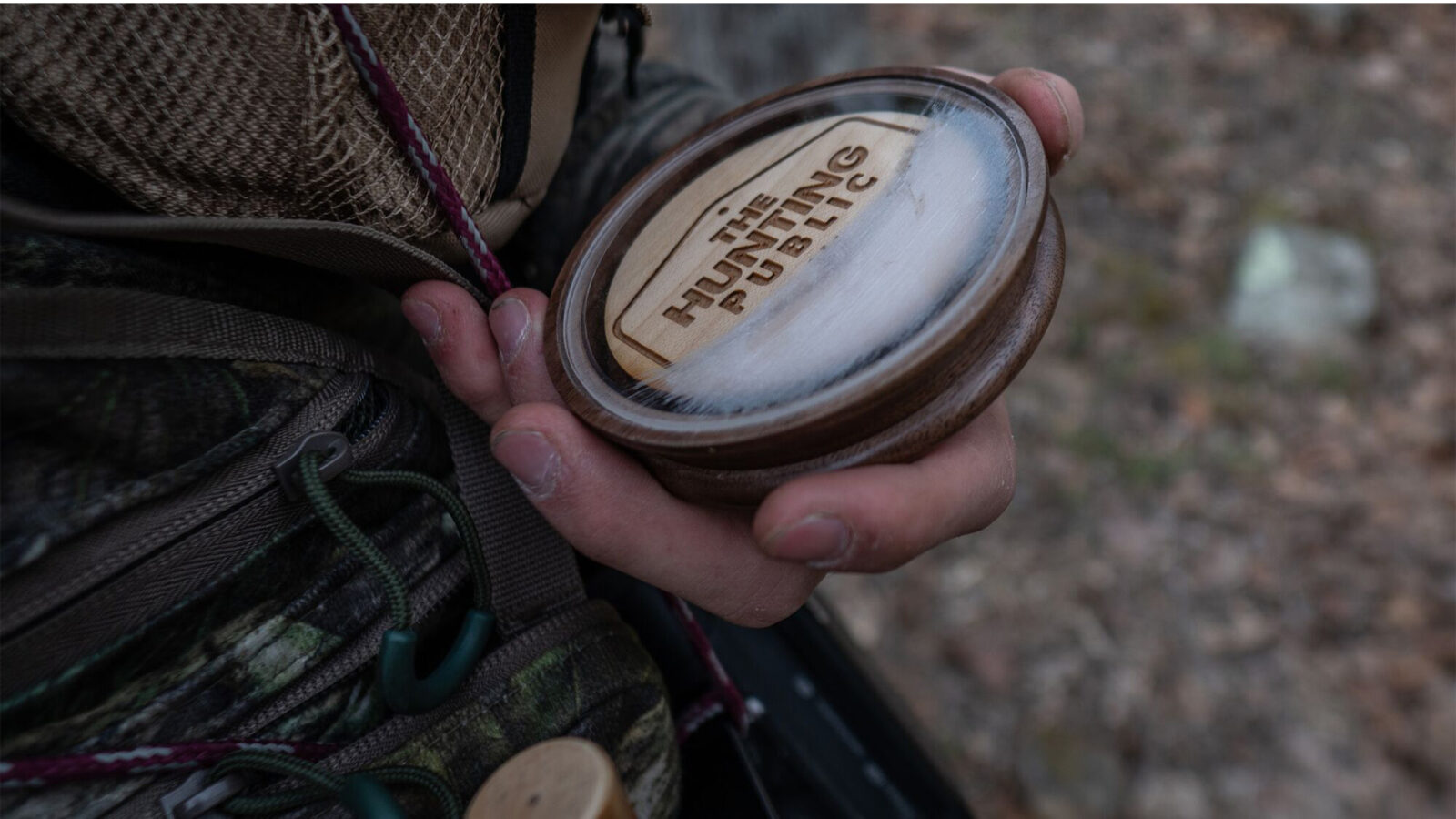

Exclusive Discounts on Calls
Get more out of your dollars as an onX Elite Member when you shop Woodhaven calls.
Tennessee
The Hunting’s Still Good, For Now
Tennessee has been viewed for quite some time as a hotspot for hard-gobbling easterns. Pair that with picturesque terrain and you have yourself a recipe for a beautiful spring turkey hunt. The state as a whole, maintained that reputation for a long stretch of years.
However, in recent times, Tennessee has seen many of the same struggles and concerns that have swept across much of the southeast. Notable declines in populations due to predation of hens and an over abundance of hunters, especially on public lands, have been at the top of the list of detrimental factors. The concerns have been so significant, that the state has lowered the season bag limit. The state still maintains a healthy and huntable population. Just don’t travel there for the first time expecting it to be a lay-up.
Local Intel: Catman Outdoors’ Jonathan Boehme
“Tennessee has a great population of birds across the state, although the numbers are not distributed evenly. Some areas are overrun with birds, while other parts of the state seem nearly devoid of turkeys in comparison. Harvest data by county and WMA are available online, making it easy to find the most populated, and most heavily hunted, areas of the state.
“Middle Tennessee is well known for its high turkey population and quality public land, and receives some of the heaviest hunting pressure from traveling hunters as well as locals from the greater Nashville area.
“West Tennessee features flatter terrain, more farmland, and a more spotty turkey population. There are pockets of West Tennessee loaded with birds, but also areas with very poor numbers. Turkeys in the Mississippi River bottoms have suffered poor nesting success due to years of flooding.
“On the other end of the state, East Tennessee is known for its rolling hills and mountains, and vast amounts of public land. Turkey numbers are mostly good, but again, not evenly distributed. The mountains pose a unique challenge, and a means to escape some of the crowds from other hunters if you’re willing to walk the miles.”
Take a closer look at Tennessee:
TN Turkey Regs
Virginia
Yes, Virginia, There is Public Land
The George Washington and Jefferson National Forests combine to make up one of the largest areas of public land east of the Mississippi River. As a collected 1.8 million acres that include portions of Virginia, West Virginia, and Kentucky, plus state forests and DWR’s WMAs, a turkey hunter in this state has access to over two million acres total for spring turkey season.
Those who hunt turkey in Virginia see it as one of the best early season hunting opportunities, and at least for now, there’s still up to a three-bird limit, a five-week season, and around 180,000 birds to chase.
Local Intel: The Untamed’s Josh Ilderton
“Over the past few years, I’ve found myself venturing across the border to Virginia more and more. Hunting mainly the big mountain country of southwestern Virginia, it is very similar to hunting turkeys in West Virginia. Virginia has an abundance of public land that holds turkeys in the massive forests and timber of the national forests, WMAs, and the Public Access Lands for Sportsmen (PALS) units. There are a lot of access points on Virginia public lands whether you plan on walking, driving, or boating. There are plenty of walking trails to access the ridge lines where you can hunt from the top down. Hunting pressure has increased over the past couple of years, but there are plenty of areas to get away if you’re willing to put the work (walk) in! Non-resident licenses in Virginia are very affordable and worth the cost. Good luck this season!”
Take a closer look at Virginia:
VA Turkey Regs
West Virginia
Be Willing and Willing To Walk
If you’re heading to West Virginia, you better be ready to put in some effort. Much of the terrain, especially the publicly-accessible lands, are going to be steep and filled with deep hollers, steep hills, and lots of creek systems. West Virginia allows two birds during their roughly month-long spring season, but you can only kill one per day. Their 1PM closure in the spring allows ample time for camp camaraderie, trout fishing, or afternoon siestas. It’s a great destination to go explore Appalachia with some friends to share camp with.
Local Intel: Country Outdoors’ Zachary Phillips
“You want to hunt Eastern wild turkeys in West Virginia? Get yourself a pepperoni roll, some fresh ramps, crank some John Denver, tighten up those hiking boots and get after it! Some of the best turkey hunters I’ve met have come out of the rugged, steep hollers; and for one reason. Willingness. These turkeys are very hard earned but they are definitely worth every step!
From the tops of the eastern hill country watching the Ohio River fog lift over a sunlit ridge – to the big mountains of the west. You’ll be sure to find some fine turkey hunting with a good amount of public land. In this often steep terrain brush up on your topographic maps and if you haven’t looked at the 3D elevation exaggeration feature I highly recommend it. Start your morning on a high point and take in the beauty that West Virginia has to offer. Keep in mind that the contour of the land drastically affects your hearing. I recommend running the top 10% of a ridge until you strike a turkey and then adjust and try to get at their level.
While West Virginia isn’t a walk in the park it is a beautiful place with plenty of opportunity and hardwoods. It is a rewarding challenge that is worth accepting!”
Take a closer look at West Virginia:
West VA Turkey Regs
Wisconsin
Be Respectful of the Opportunity
If you’ve been in the turkey hunting community for a bit, you’ve likely read or heard about Wisconsin, and for good reason. The vast majority of the state holds good bird numbers, a spectrum of access from reasonable to abundant public land opportunities, and some of the nicest landowners in the country. 50,435 turkeys were registered in 2024, the fourth-highest spring harvest in state history. This was a 22% increase from the five-year average.
A few things to note about Wisconsin: first is their December spring turkey application deadline. In order to get an early season you have to get your name in the hat. However, if you want to hunt turkeys in May, leftover licenses go on sale on a first-come-first-serve basis in mid-March. Secondly, the tag you purchase is only good for a seven-day period. In years past it has been a Wednesday-to-Wednesday time frame. Lastly, that tag is only good for the specific region in which you purchased it for, not statewide. With that being the case, there is no limit on the number of tags you can buy. But don’t be greedy and shoot five turkeys in Wisconsin just because you can. Respect the opportunity and take notice of what is happening across many states’ turkey populations and work to conserve the excellent turkey hunting Wisconsin offers.
Local Intel: onX’s Own Jared Larsen
“Having grown up in Wisconsin, I’ve hunted most of Wisconsin’s turkey regions and you really can’t go wrong with which one you choose. Regions 5, 6, and 7 will certainly pose more of a challenge to both draw and hunt, as bird numbers in the northern stretches of the state are significantly lower than the rest of the state, mainly due to lack of abundant food sources like the crop lands to the south.
“At a really high level, Region 1 has a lot of variable terrain along the Mississippi in the ‘driftless region,’ plenty of birds, and solid amounts of public land, but this region also sees the most pressure most years. Region 2 and 3 are pretty similar with broken blocks of timber and crop lands throughout. With enough public land to certainly hold birds, both of these regions have been fruitful for me. Lastly, Region 4 flips the script and you see broken crop land with vast expanses of timber begin to shape the landscape. More public land is available, but prime habitat, and thus bird densities, certainly seem to fall off a bit. Some cool water access opportunities exist throughout the state, so waders or a small craft could really come in handy. Spring in Wisconsin can throw a whole array of weather at you, so expect to be cold, especially if hunting in April.”
Take a closer look at Wisconsin:
WI Turkey Regs
